Sustainable Steel Advancement: Lida Group Cuts Carbon Footprint 40% in Farm House Construction Using Recycled Steel Frames
2025-Aug-14 16:43:52
By Admin
1. Introduction
In an era marked by growing concerns over climate change and environmental degradation, the construction industry stands at a critical crossroads. As one of the largest contributors to global carbon emissions—accounting for approximately 39% of energy-related CO₂ emissions worldwide—there is an urgent need for sustainable practices and innovative solutions to reduce its environmental impact. The agricultural sector, too, is undergoing a transformation, with farmers and agricultural enterprises increasingly seeking eco-friendly infrastructure that aligns with broader sustainability goals.
Farm houses, which serve as essential living and operational spaces for agricultural communities, have traditionally been constructed using materials and methods that carry significant carbon footprints. From the extraction and processing of raw materials to transportation and on-site construction, every stage of traditional farm house building contributes to greenhouse gas emissions. Recognizing this challenge, Lida Group, a leader in steel structure construction, has pioneered a sustainable breakthrough: the use of recycled steel frames in farm house construction, resulting in a 40% reduction in carbon footprint. This article explores Lida Group’s innovative approach, the benefits of recycled steel in agricultural construction, and the broader implications for sustainable development in the farming sector.

2. The Environmental Impact of Traditional Farm House Construction
2.1 Carbon Emissions in Conventional Building Materials
Traditional farm house construction relies heavily on materials such as concrete, wood, and virgin steel—all of which have substantial environmental costs. Concrete production, for example, is responsible for approximately 8% of global CO₂ emissions, primarily due to the calcination process in cement manufacturing, which releases large amounts of carbon dioxide. Wood, while renewable, often involves deforestation and transportation from distant forests, contributing to carbon emissions and biodiversity loss. Virgin steel, produced from iron ore, requires intensive energy input, with blast furnaces emitting significant amounts of CO₂ during smelting.
The lifecycle of these materials further amplifies their environmental impact. Concrete structures, though durable, have limited recyclability, leading to waste accumulation in landfills. Wood is susceptible to rot, pests, and weather damage, shortening its lifespan and necessitating frequent replacement—each cycle adding to carbon emissions. Virgin steel, while recyclable, requires far more energy to produce from raw materials than to recycle, making traditional steel production a major contributor to industrial emissions.
2.2 Resource Depletion and Waste Generation
Beyond carbon emissions, traditional farm house construction depletes finite natural resources. Iron ore, limestone (used in cement), and timber are extracted at unsustainable rates, leading to habitat destruction, soil erosion, and water pollution. For instance, mining operations for iron ore disrupt ecosystems, while logging for timber contributes to deforestation, reducing the planet’s capacity to sequester carbon.
Waste generation is another critical issue. Construction and demolition waste constitutes a significant portion of global solid waste, with unused materials, offcuts, and debris ending up in landfills. Traditional farm house building often involves over-ordering materials to account for inefficiencies, exacerbating this problem. Additionally, the short lifespan of some traditional structures leads to more frequent demolition and reconstruction, creating a cycle of waste and resource consumption.

3. Recycled Steel: A Sustainable Alternative
3.1 The Benefits of Recycling Steel
Steel is one of the most recyclable materials on the planet, with a recycling rate exceeding 90% in many industries. Recycling steel offers profound environmental benefits compared to producing it from virgin ore. The process of recycling steel requires approximately 75% less energy than primary steel production, directly reducing carbon emissions. For every ton of steel recycled, up to 1.5 tons of iron ore, 0.5 tons of coal, and 40% of water usage are saved, conserving valuable resources.
Recycled steel retains the same strength, durability, and versatility as virgin steel, making it an ideal substitute in construction. It can be melted down and reshaped repeatedly without losing its properties, creating a closed-loop system that minimizes waste. By diverting steel from landfills—where it would otherwise corrode and release methane, a potent greenhouse gas—recycling also reduces methane emissions and extends the life of landfill sites.
3.2 Challenges in Sourcing and Processing Recycled Steel
Despite its advantages, the use of recycled steel in construction faces challenges. Sourcing high-quality recycled steel requires a robust collection and sorting infrastructure. Mixed metal waste, contamination with other materials (such as paint, plastics, or chemicals), and varying grades of steel can compromise the quality of the recycled product. Ensuring a consistent supply of recycled steel that meets the strict standards of structural construction—particularly for load-bearing components in farm houses—demands efficient recycling processes and quality control measures.
Processing recycled steel also requires specialized facilities to remove impurities and adjust alloy compositions to meet specific structural requirements. This can increase initial costs compared to using virgin steel, though these are often offset by long-term energy savings and environmental benefits. Additionally, transportation of recycled steel from collection points to processing plants and then to construction sites can add to the carbon footprint if not optimized, highlighting the need for localized recycling networks.
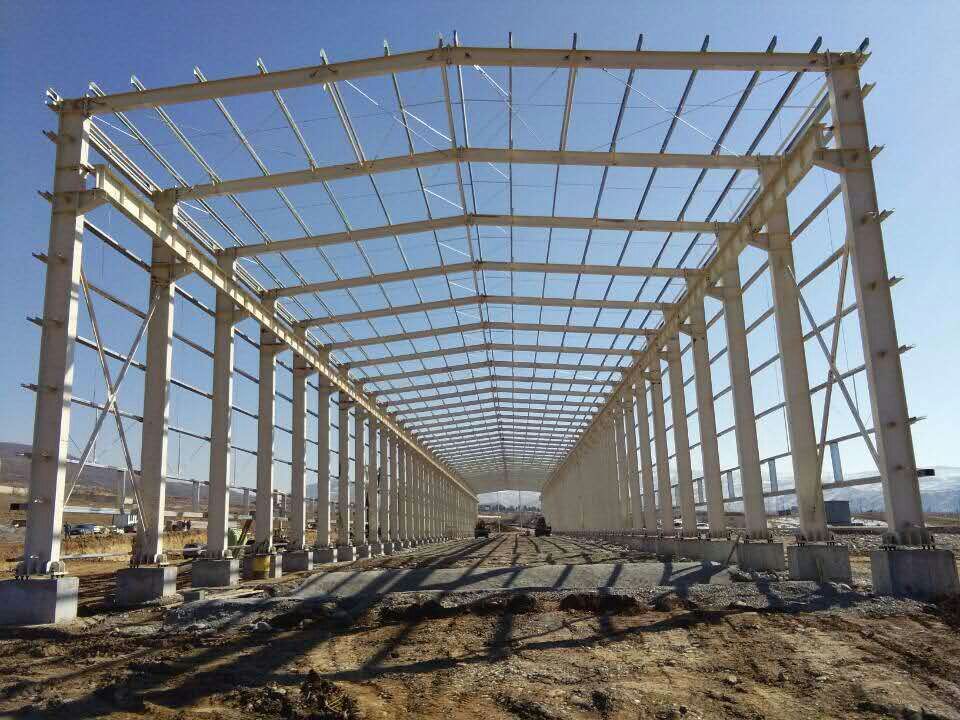
4. Lida Group’s Innovation: Recycled Steel Frames for Farm Houses
4.1 The Development of Recycled Steel Frame Technology
Lida Group has addressed the challenges of using recycled steel in construction through years of research and development, creating a proprietary system for producing high-quality recycled steel frames tailored to farm house needs. The company’s approach begins with sourcing recycled steel from certified suppliers, ensuring that the material meets strict purity and strength standards. Advanced sorting technologies—including magnetic separation and laser scanning—are used to remove contaminants, guaranteeing the integrity of the recycled steel.
Lida Group’s engineers then design steel frames using computer-aided design (CAD) software, optimizing their structure to maximize strength while minimizing material usage. The recycled steel is melted down and rolled into beams, columns, and panels with precise dimensions, ensuring compatibility with modular construction methods. This prefabrication process reduces on-site waste and allows for quick assembly, further lowering the carbon footprint of construction.
4.2 Quality Control and Structural Integrity
Maintaining structural integrity is paramount in farm house construction, as these buildings must withstand harsh weather conditions, including high winds, heavy rain, and snow. Lida Group subjects its recycled steel frames to rigorous testing, including tensile strength, impact resistance, and corrosion resistance assessments. The frames meet or exceed international building codes, ensuring they are safe and durable for agricultural use.
To enhance longevity, the recycled steel frames are treated with eco-friendly coatings that prevent rust and corrosion, even in humid or agricultural environments where exposure to moisture and chemicals is common. This treatment extends the lifespan of the farm houses, reducing the need for frequent repairs or replacements and further contributing to sustainability.
4.3 The 40% Carbon Footprint Reduction: How It’s Achieved
Lida Group’s use of recycled steel frames has resulted in a 40% reduction in the carbon footprint of farm house construction compared to traditional methods. This significant reduction is achieved through multiple stages of the building lifecycle:
- Material Production: As noted, recycling steel uses 75% less energy than producing virgin steel, cutting emissions from manufacturing by a substantial margin.
- Transportation: Prefabricated recycled steel frames are lighter and more compact than traditional materials, reducing fuel consumption during transportation to construction sites.
- On-Site Construction: Modular assembly minimizes on-site energy use, as less heavy machinery and labor are required compared to traditional building methods.
- Reduced Waste: Precision manufacturing and prefabrication reduce material waste, lowering emissions associated with waste disposal and landfill management.
- Longevity: The durability of recycled steel frames means fewer replacements over time, reducing the carbon footprint of future construction cycles.
This holistic approach to sustainability ensures that emissions are minimized at every step, from raw material sourcing to the end of the building’s useful life.
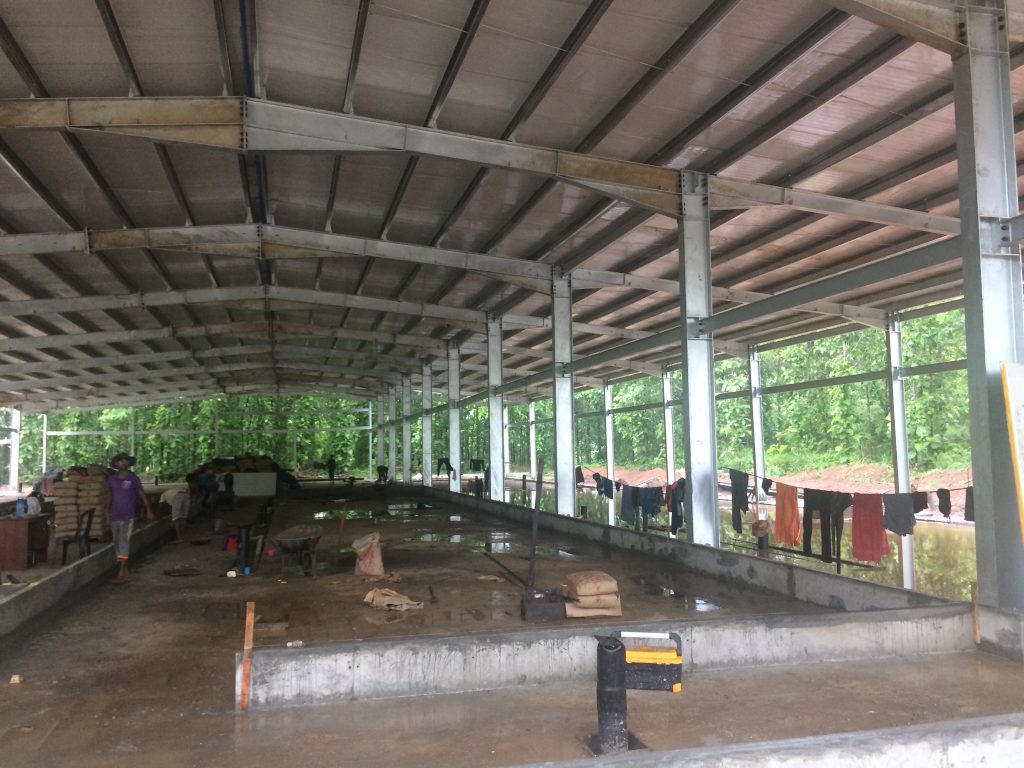
5. Features of Lida Group’s Recycled Steel Frame Farm Houses
5.1 Design Flexibility and Customization
Lida Group’s recycled steel frame farm houses offer exceptional design flexibility, allowing for customization to meet the unique needs of agricultural operations. Whether used as living quarters, equipment storage, or livestock shelters, the modular steel frames can be adapted to various sizes and layouts. Open floor plans, high ceilings, and large doorways are easily incorporated to accommodate farm equipment or livestock, while insulation and ventilation systems can be tailored to local climate conditions.
The frames support a range of exterior and interior finishes, including sustainable materials such as recycled wood panels, fiber cement, or green roofs, enabling farmers to create functional, aesthetically pleasing structures that blend with their surroundings. This flexibility ensures that the farm houses are not only sustainable but also practical and comfortable for daily use.
5.2 Durability and Resistance to Environmental Factors
Farm houses face unique environmental challenges, from exposure to agricultural chemicals and animal waste to extreme weather events. Lida Group’s recycled steel frames are designed to withstand these conditions. The steel is resistant to rot, pests (such as termites), and corrosion, ensuring the structure remains intact for decades. Unlike wood, which can warp or decay, or concrete, which may crack under freeze-thaw cycles, recycled steel maintains its structural integrity in diverse climates.
The frames are also engineered to resist high winds and heavy snow loads, making them suitable for regions prone to storms or harsh winters. This durability reduces maintenance costs and ensures the farm houses remain operational even in adverse conditions, supporting the continuity of agricultural activities.
5.3 Energy Efficiency and Insulation
Lida Group integrates energy-efficient features into its recycled steel frame farm houses to further reduce their environmental impact. The steel frames accommodate high-performance insulation materials, such as recycled fiberglass or cellulose, which minimize heat transfer and reduce the need for heating and cooling. This lowers energy consumption and associated carbon emissions from farm house operations.
Additionally, the company offers optional solar panel installations, rainwater harvesting systems, and energy-efficient windows and doors, creating self-sustaining farm houses that generate their own power and conserve water. These features not only reduce the carbon footprint but also lower utility costs for farmers, making sustainable living more economically viable.
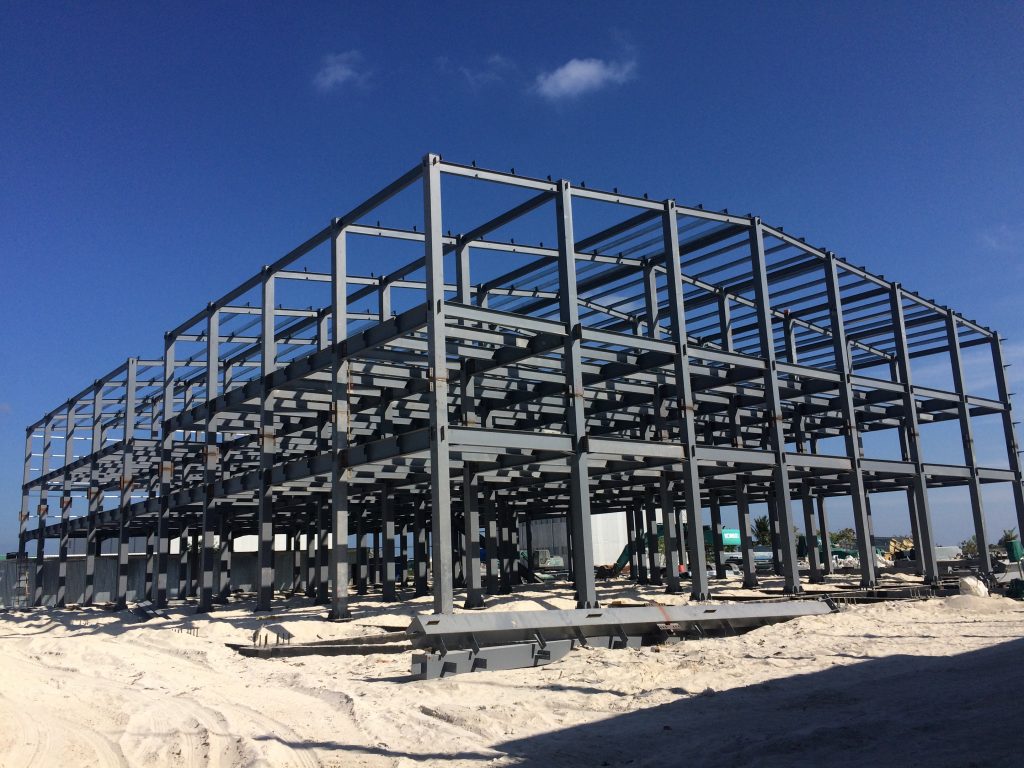
6. Benefits for Farmers and Agricultural Communities
6.1 Cost Savings Over the Long Term
While the initial cost of recycled steel frame farm houses may be comparable to or slightly higher than traditional structures, the long-term cost savings are substantial. Reduced energy consumption from efficient insulation and optional renewable energy systems lowers monthly utility bills. The durability of the steel frames minimizes maintenance and repair costs, as there is no need for frequent painting, termite treatments, or structural repairs.
Moreover, the modular design allows for easy expansion as farm operations grow, avoiding the need for costly new construction. Over the lifespan of the building, these savings often outweigh the initial investment, making recycled steel frame farm houses a cost-effective choice for farmers.
6.2 Compliance with Environmental Regulations
As governments around the world tighten environmental regulations, farmers face increasing pressure to adopt sustainable practices. Lida Group’s recycled steel frame farm houses help farmers comply with these regulations by reducing carbon emissions, minimizing waste, and conserving resources. The use of recycled materials and energy-efficient features can qualify farmers for environmental certifications, grants, or tax incentives, further offsetting costs and enhancing their reputation as sustainable agricultural producers.
6.3 Strengthening Community Resilience
Sustainable farm houses contribute to the resilience of agricultural communities. By reducing reliance on fossil fuels and finite resources, these structures help communities adapt to climate change and resource scarcity. The durability of the buildings ensures they can serve as safe havens during extreme weather events, protecting both people and valuable farm equipment.
Additionally, Lida Group’s focus on local sourcing and recycling creates opportunities for jobs in the recycling and construction sectors, strengthening local economies. By investing in sustainable infrastructure, agricultural communities can build a more resilient future, ensuring their long-term viability.
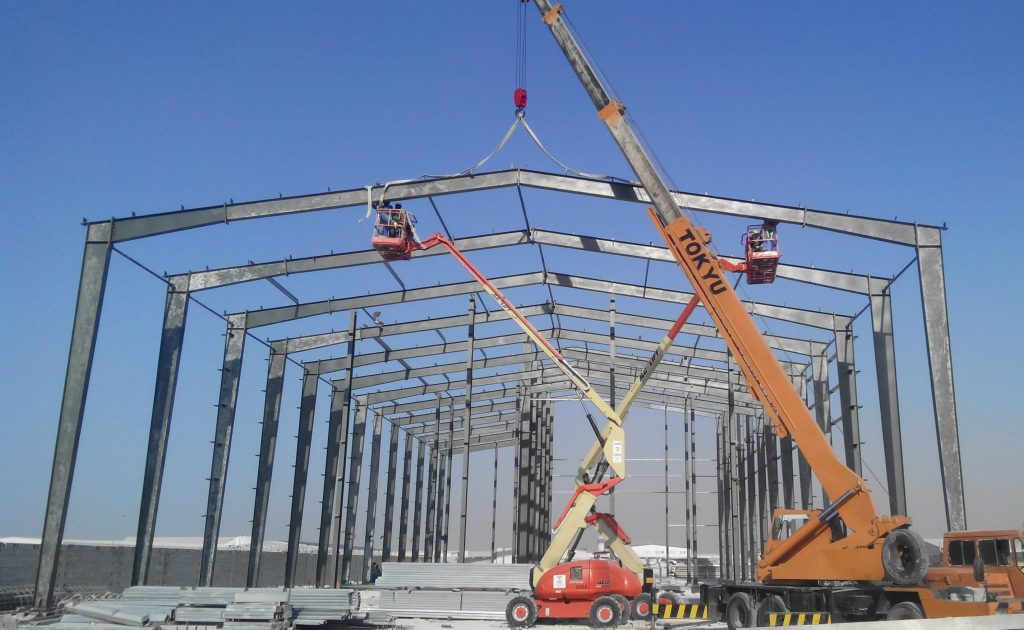
7. Case Studies: Successful Implementation
7.1 Small-Scale Family Farms
A small family farm in a rural region of the Midwest adopted Lida Group’s recycled steel frame farm house to replace an aging wooden structure. The new farm house, designed as a combined living space and equipment storage area, reduced the farm’s annual energy bills by 30% due to its efficient insulation. The family noted that the steel frame withstood a severe storm that damaged neighboring wooden outbuildings, highlighting its durability. Over five years, the cost savings from reduced energy use and maintenance exceeded the initial investment, making the switch to recycled steel financially beneficial.
7.2 Large Agricultural Enterprises
A large-scale agricultural enterprise with multiple farms across a coastal region invested in Lida Group’s recycled steel frame farm houses for livestock shelters and worker accommodations. The company aimed to reduce its carbon footprint to meet corporate sustainability goals. By using recycled steel frames, the enterprise achieved a 40% reduction in construction-related emissions across its operations. The modular design allowed for quick expansion of facilities as the business grew, while the corrosion-resistant steel withstood the coastal humidity, reducing replacement costs. The enterprise’s sustainability report highlighted the project as a key milestone in its environmental strategy, enhancing its reputation among consumers and investors.
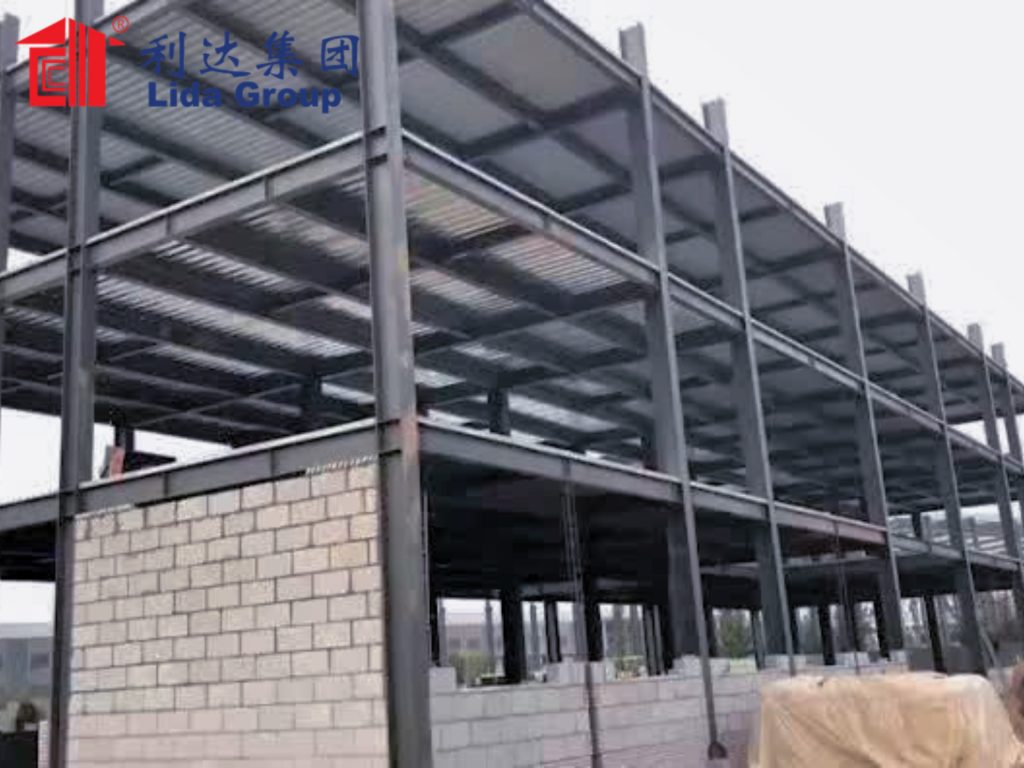
8. Future of Sustainable Steel in Agricultural Construction
8.1 Technological Advancements in Recycled Steel
The future of recycled steel in agricultural construction is promising, with ongoing technological advancements set to improve efficiency and reduce costs. Innovations in recycling processes, such as hydrogen-based steelmaking for recycled materials, could further lower carbon emissions. Advanced coatings and treatments may enhance the corrosion resistance of recycled steel, extending its lifespan even in harsh agricultural environments.
Lida Group is investing in research to develop lighter, stronger recycled steel alloys that use less material while maintaining structural integrity. These advancements could reduce transportation emissions and make recycled steel frames even more cost-effective for farmers.
8.2 Expanding Applications in Agriculture
Beyond farm houses, recycled steel frames have the potential to revolutionize other agricultural structures, including greenhouses, barns, and grain storage facilities. Greenhouses built with recycled steel frames can support energy-efficient glazing and climate control systems, reducing the carbon footprint of controlled-environment agriculture. Barns and storage facilities would benefit from the durability and pest resistance of steel, protecting livestock and crops more effectively.
Lida Group is exploring these applications, working with agricultural experts to design specialized structures that meet the unique needs of different farming operations. By expanding the use of recycled steel in agriculture, the company aims to contribute to a more sustainable food system.
8.3 Policy Support and Industry Collaboration
To accelerate the adoption of recycled steel in agricultural construction, policy support and industry collaboration are essential. Governments can incentivize the use of recycled materials through tax breaks, grants, or mandatory sustainability standards for public agricultural projects. Collaboration between construction companies, recycling facilities, and farmers can strengthen the supply chain for recycled steel, ensuring a consistent, high-quality material source.
Lida Group is actively engaging with policymakers and industry organizations to promote sustainable steel practices. The company participates in industry forums and partners with agricultural associations to educate farmers about the benefits of recycled steel frame construction, driving broader adoption.
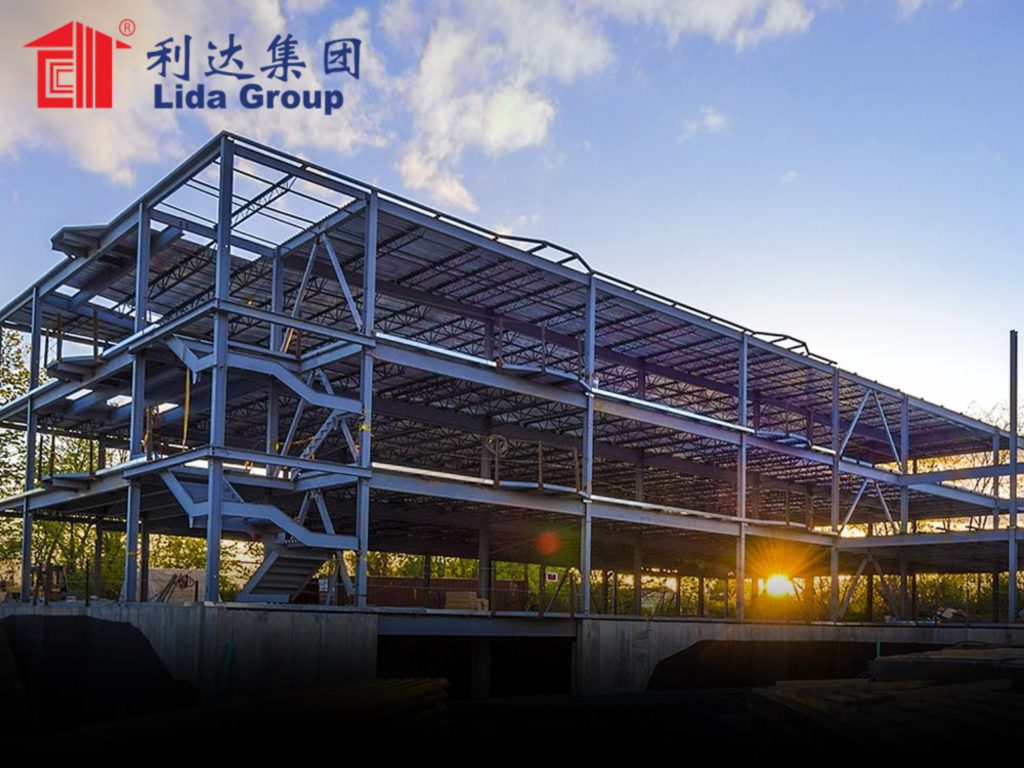
9. Conclusion
Lida Group’s use of recycled steel frames in farm house construction represents a significant step forward in sustainable building practices, demonstrating that reducing carbon emissions in the construction industry is both feasible and beneficial. By achieving a 40% reduction in carbon footprint, the company has set a new standard for eco-friendly agricultural infrastructure, proving that environmental responsibility and practicality can go hand in hand.
The benefits of recycled steel frame farm houses—from durability and cost savings to compliance with environmental regulations—make them an attractive choice for farmers of all scales. Case studies highlight their success in real-world applications, from small family farms to large agricultural enterprises, underscoring their versatility and effectiveness.
Looking ahead, technological advancements, expanding applications, and increased policy support are poised to drive further growth in the use of recycled steel in agricultural construction. Lida Group’s innovation serves as a model for the industry, showing that through creativity, investment in research, and a commitment to sustainability, the construction sector can play a pivotal role in addressing climate change.
In a world where sustainability is no longer optional, Lida Group’s recycled steel frame farm houses offer a tangible solution for agricultural communities seeking to reduce their environmental impact while building resilient, functional infrastructure. By embracing such innovations, the farming sector can contribute to a more sustainable future, ensuring that food production remains viable for generations to come while protecting the planet.
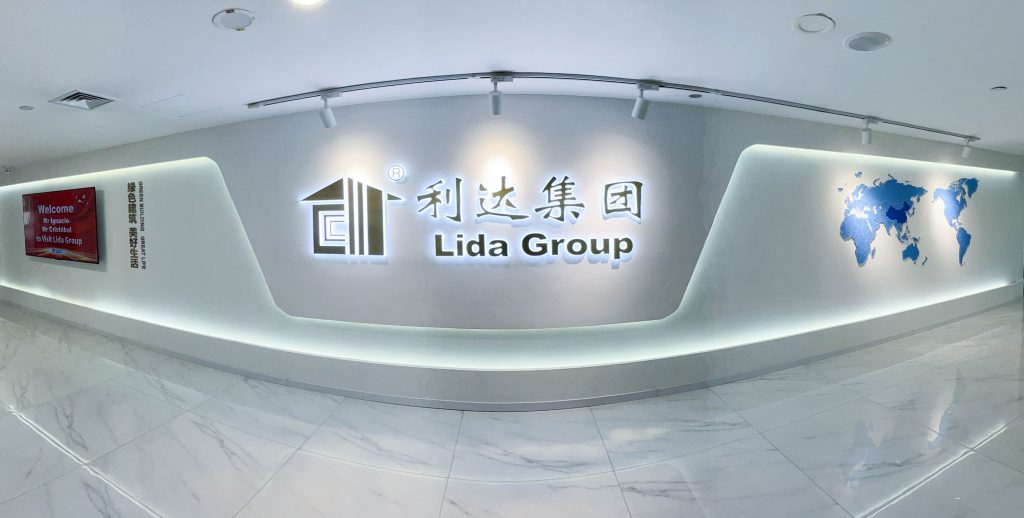
Related news
-
Pharma Storage Breakthrough: Lida Group's High-Quality Steel Warehouses Feature Precision Steel Frame Building for Vaccine Integrity
2025-08-14 15:46:08
-
Automated Poultry Revolution: Lida Group Delivers Climate-Controlled Steel Farm Houses via Advanced Steel Structure Construction
2025-08-14 14:25:15
-
Hurricane-Resistant Farm Innovation: Steel Frame Building Systems from Lida Group Protect High-Quality Agricultural Assets
2025-08-14 13:34:43
contact us
- Tel: +86-532-88966982
- Whatsapp: +86-13793209022
- E-mail: sales@lidajituan.com


